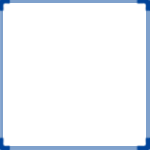- History
- Pottery
- Industry
Multi-Colored
Spode began two color underglaze printing in 1824 pre-dating by many years the later method of multi-color printing which is usually attributed to Feliz Pratt. Spode's method involved applying a sticky substance, commonly referred to by the workers as "ackey," to the first color laid down, or to areas that the worker did not wish to affect with the second color. This sustance was impervious to oil or color and could later be washed off. Adding additional colors by hand within the printed pattern before glazing was also a method used to achieve a multi-colored appearance. Lastly, the factory also added color by "enameling" or applying colors over the glaze.
Patterns
|
Bamboo
|
Bang Up
|
Bang-Up Pattern with Ship Border
|
Botanical 10
|
Bowpot
|
|
British Flowers Border
|
Bude
|
Cabbage Pattern
|
Cracked Ice and Prunus
|
Dragon 4
|
|
English Sprays
|
English Sprays
|
Flower Cross
|
Flying Pennant I
|
Frog
|
|
Frog
|
Geranium with Jasmine Border
|
India
|
Jasmine
|
Love Chase
|
|
Nigel
|
Nuptial Preparations
|
Parsely
|
Parsley with Ivy Border
|
Pattern 1584
|
|
Pattern 2117
|
Pattern 3222
|
Pattern 3910
|
Pattern 4771
|
Pattern B173
|

